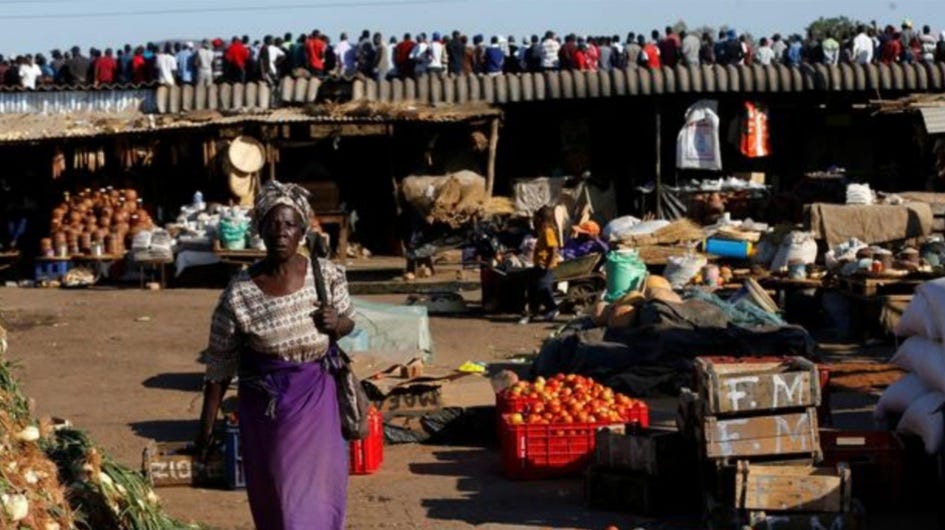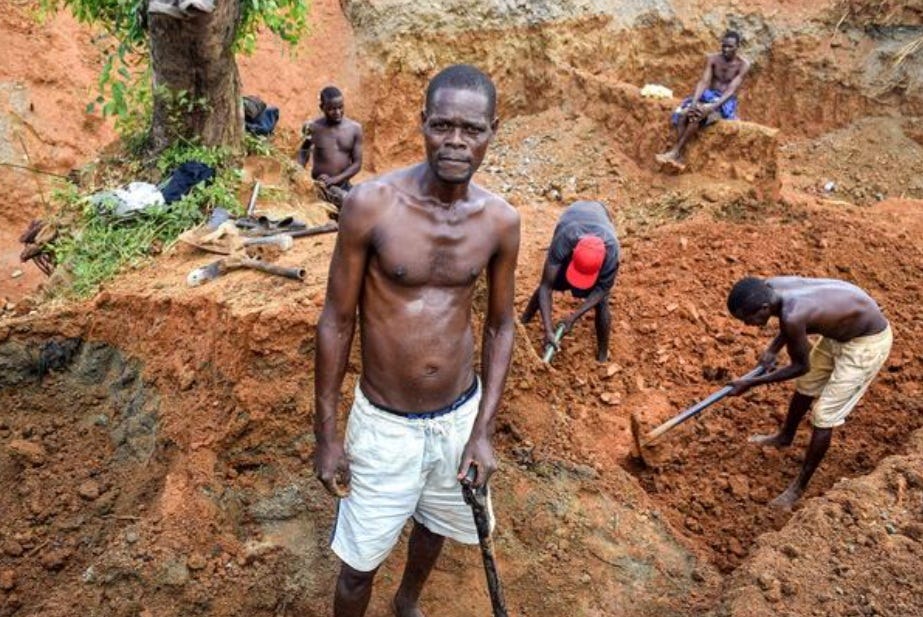
Image from Alamy
Bindura: City of Gold
My first memories of a place are usually of the people I encountered there. It might be because I’m drawn to locations with a strong life force, and for many, it’s the residents giving the scenery its mood. Whatever the case, Bindura, a town rarely featured in news headlines about popular vacation spots in Zimbabwe, has continued to be "that place" for me.
I must have been ten the first time I went there. Ravenous eyes, taking in every bit of the landscape. The first thing my father showed me was the "lights" in the dark just as we were arriving. It would take me a few more weeks to finally see the rusted heavy steel structures during daylight. "This is Fredda Rebbecca Mine," he told me. "It’s where they mine gold." He could have said lithium mine, and it would still have registered as gold to me. Only two minerals existed to me then: gold and silver, so it made sense for this one to be for gold.
Now I know there is a nickel mine too nearby, almost just as huge. Nineteen years on, the road is more rugged than it was then. Where old and broken small shops used to be, as you enter the town, a university now strides. You can tell by how it sits among other buildings that people talk about this place a lot. Or at least they did when it was built. It just sits like a building someone is proud of.

Image from Alamy
Musvosvi Street
If you spend a week or more in Bindura, you will most certainly have found its pulse. And it isn’t in the leafy suburbs of "kumaYard" or the fairly newer suburbs of Aerodrome, Chiwaridzo and Chipindura. Those are the places you may go to experience the town in its half-sleep state. For life, you go to Chipadze—Musvosvi Street, to be precise.
There is a church I used to go to on Musvosvi Street, a Salvation Army church, which almost all locales refer to simply as S.A. This church, with blue, beaten doors punctuating a deep cream building, is one of the most talked about churches in the town, and not for obvious reasons.
When you hear a Bindura resident say they are going to S.A., it’s less likely they are going there to pray or even enter the building. Outside the church’s gate, which sits close to a corner that leads pedestrians to the CBD, is a market area. You can find almost anything here, that is, if you don’t mind the dust—and many people don’t mind the dust. So, people say they are going to S.A. and sometimes not mean the church itself but the street to get a deal done, an item swapped, or wade through mounds of illegally imported second-hand clothes to find their next best wardrobe item. They may also sometimes not mean they are going to the market, but in the general direction of it- it’s a signpost you barely spend the day without hearing about.
Musvosvi Street, other than the church and bustling market, is a street full of old houses—some of the first ever to be built in Bindura. These were houses where mine workers used to live before independence in 1980, and just by looking at the burgundy chain of walls littering the streets, you can tell they have witnessed more stories than they can tell. But they do tell some!
You can spot profanities written on some of the walls from a distance or young couple’s names emboldened on Dura wall panels. This is often done not by the couples themselves but by colleagues wanting to let the secret out into the world.
The street is a shouting contest among those who walk in it, and it remains quite as lively even as it gets dark. If you stand there long enough, quietly observing while enjoying street-cooked food, you will see the crowds changing from around 8 pm. It gets a touch quieter, but not enough. Clothes get shorter; men add a bounce to their walk. Close by, an unbusy bus stop gets a new name which it will shed by morning: "Touchline". If you are brave, you get close. There are women queuing up there. You discover, then, that the town’s beauty lies not only in its gold or energy but also in its- people. Men pass by and take a woman they choose, the birth of a business transaction. By morning, this bus terminus will be clear again, and school children in uniforms bought to be a few sizes bigger to avoid many purchases in a year will rush through it to their schools.
Shuddering city
If you are in a Kombi, as commuter omnibuses are called, you can travel the town, from one end to the other, in 20 quick minutes. It’s a town where if you stay long enough, most will begin to know you by name.
In Chiwaridzo Phase 2, where a relative owns a house, I hear a thundering sound, followed by a tremor that slightly shakes the house and makes the zinc roof squeak. A daily routine whenever an explosive is blasted at the mine. We joke that if you sleep on the floor in absolute quiet, you can hear miners digging beneath you. Although we laugh, this isn’t far-fetched.
When a mining company leaves a site for safety purposes, locales usually start going there to continue with their own mining. It’s a race almost as old as the city, between the gold panners and the police. A few times, you wake up to the news that a mining tunnel collapsed and killed people, but here, people have to eat, so they bury the dead and keep going, hoping death will be kind enough to spare them. Before Bindura, I had never heard profanities spoken so commonly, and with such stoicism, they seem to belong on the lips that speak them. They aren’t always said because something is wrong. In fact, many times, it’s because something is right. A passerby swears at the other as an expression of their friendship.
That’s how I remember this small mining town 80km from Zimbabwe’s capital. I don’t remember its gold for its own sake—I only saw it a few times. Neither do I sit around and remember the endless uncovered pits where illegal gold panners mine. I remember people. Only then, after understanding them- course language and seeming to shout about everything, can I experience the mountains that dot around it, remember that the first time I saw gold, a panner was extracting it with mercury at the back of his house. Or know that Musvosvi Street is by now more than a street, but a personality.
If you ever visit Bindura, you will find that each suburb has almost similar architecture. So, you may only be intrigued by its buildings if you tie each one to the residents that animate and enliven them. Then a building can have a name, and the name can turn into a code that stands for many things that happen around it. I am going to S.A., and that is to say, I have enough money for only a cup of rice, and that’s the place around here you can be sure to get it.

